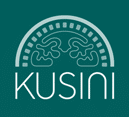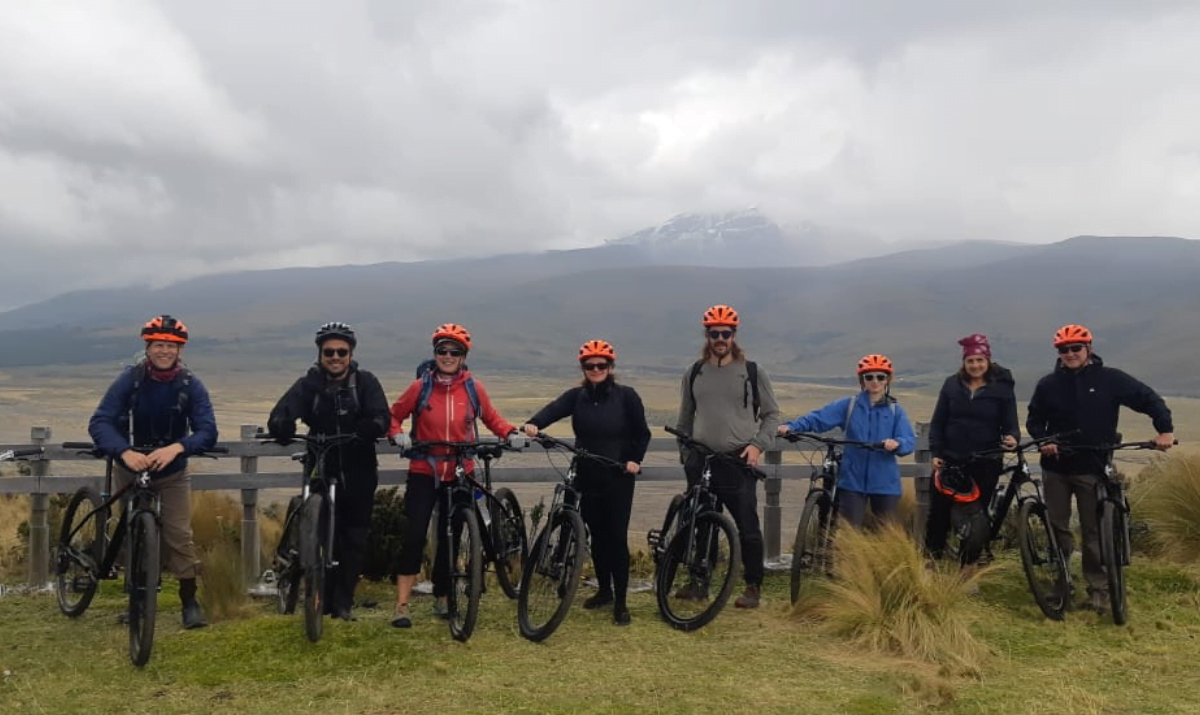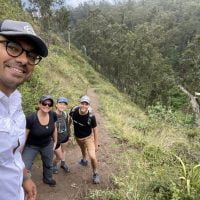This is the 2nd part of a three part trip report from my October 2021 trip to Ecuador. Make sure to check out my reports from the Ecuadorian Amazon and the Galapagos.
Leaving the Amazon and flying to the Andes is when it really hit home how this compact country, the size of Colorado, is so very diverse. It is truly four worlds in one small country! We took off from the rainforest and watched the thrumming jungle and the Napo River recede below us and less than 30 minutes later I was pressed against the airplane window taking photos of three snow-capped volcanoes, including the highest active volcano in the world (Cotopaxi), before landing in Quito. Arriving in the Andes felt like the beginning of a totally separate trip!
- Taking off from Coca viewing the Napo River and the Amazon
- 30 minutes later, arriving in Quito greeted by Cotopaxi and the Andes!
We were collected at the airport by Tomas, our guide in the Andes. In the coming days we were to discover he is an extraordinarily knowledgeable and personable ambassador for the Andes and for Ecuador. From Quito’s airport, we headed straight for Otavalo and kicked off our visit at the home of Claudia and her Kichwa Otavaleno indigenous family who has created a tourism initiative designed to help preserve local culture while celebrating and sharing the value of their ancestral customs. Her English is fantastic, so nothing is lost in translation for those who aren’t fluent in Spanish. She is a direct conduit into her family and culture without the need for translation.
Claudia and her family were super welcoming and all COVID protocols were comfortably in place. We were happy to know that she and family were fully vaccinated. The group mostly chose to wear masks, but as her home was totally open (windows and doors) it was comfortable to remove them as well.
Claudia took us through an immersive gastronomy experience making a traditional Andean meal. We did it all! From grinding the cornmeal in the granary to rolling out the dough for the empanadas. As we worked, we learned about the important cultural traditions of eating guinea pigs – known as ‘cuy.’ There is a strong tradition in health connected to eating cuy and Claudia explained the central role that the cuy plays in their daily lives and their health. We also had the chance to explore her garden to learn about local herbs and their culinary and medicinal uses in traditional culture.
Making the empanadas was a super hands-on experience. Everyone helped with the dough, making the filling and then forming and filling their own empanadas. Let’s just say that each one was unique to its creator – some were better than others! These delicious treats were just the starter and were followed by a feast that included quinoa soup, cuy asado and more! We were blissfully overwhelmed by food.
As we feasted, Claudia’s husband and his Kichwa folk family band played for us to add to what was already a totally incredible experience. The entire day was fun and immersive, and everyone had a great time together. We cooked, we learned, we feasted and we danced – it was an incredible way to be welcomed to the Andes by a traditional Otavaleno Kichwa family.
Tropic’s partnership with the Kichwa Otavalo allows their guests to spend time with Claudia and her family through the community-based tourism project they created to learn about their traditions, clothes, music, crops and more in an intimate and authentic way. Even if travelers don’t have time for a full visit, Tropic can include a meal or a cooking class with Kichwa Otavalo when your guests are in the area. It’s a ‘do not miss’ experience!
The fun wasn’t over yet! That evening we stayed at Hotel Otavalo – one of the Art Hotels properties. There are three Art Hotels properties in Ecuador – in Quito, Otavalo and Cuenca – each offering local experiences and incredible local (neighborhood-level) art. Their concept is unique in that they find historic properties and restore them to their former splendor with upgrades and modern twists. The focus is on traditional art and artisans giving a truly local feel.
The team at Hotel Otavalo had an arrival experience for us – a traditional Otavaleno dance performed by their staff, and then all of us (though I’m not sure we were as good)! It was a super fun welcome experience. After check-in, we did a hands-on demonstration of the traditional Kichwa foot loom (different from the backstrap loom). The coordination and patience required to use the machine to weave – even just to put it together to make it operate – is astonishing. It must take a PhD in engineering to make it work, and the art that is produced by the talented artisans who know how to use it is absolutely incredible!
There was a book of designs available that we could select from to make a bracelet. We were then shown how (with some expert help), by pushing on pedals and different combinations of pedals, we could make our own bracelet. It was a fun and interactive way to learn about the foot loom and also to create something to take home. It left us with a true sense of appreciation for the extraordinary artisanship in using the foot loom.
We of course finished off the day with more food and drink. We sipped Ecuadorian craft cocktails on the roof of the hotel followed by a fantastic tasting menu dinner prepared by the chef of Hotel Otavalo.
Hotel Otavalo is one of the few urban hotels in Otavalo, making it unique. Most people stay in rural haciendas – which are great and definitely have their place – but for the guests that want to be in the center of this bustling, interesting town, Hotel Otavalo is a great option. As a bonus, it’s a great fit for foodies and upmarket guests, as it is arguably the most luxurious in Otavalo. We recommend a night or two spent there as part of a longer itinerary.
For guests doing a Tropic lodge-to-lodge trek, Hotel Otavalo is a great place to start as well. They can arrive in Otavalo late morning, enjoy a cultural experience, have a wonderful meal and spend the night at Hotel Otavalo, then start their trek through the valley visiting special Tropic-style stops along the way before reaching the next lodge.
The next day we did a combination of different active adventures in the Otavalo valley. Being a FAM, we of course did more than what actual guests would do in one day! From Hotel Otavalo, we had a short vehicle transfer to the trailhead to Peguche waterfall, a sacred Kichwa site. It’s an easy hike to the waterfall with beautiful views – lots of reward for little effort. From there, it’s less than a one-hour hike to Miguel Andrango’s weaving workshop in the town of Agato. These visits combine to make a nice half-day experience. It’s a great way to stretch your legs, see the forest and waterfall, then end with a cultural experience. Miguel’s workshop is an incredible demonstration of the traditional backstrap loom weaving practitioners and Tropic’s visitors are helping to preserve this endangered art.
Pro tip: if you want to buy high quality weavings – blankets, scarves, blouses, etc – don’t shop in town – buy direct from the artisans like Miguel and his family. It will cost more, but the quality of the hand-woven pieces is incomparable. It’s also pretty special to think that each purchase is helping to preserve tradition and supporting the artisans directly.
From Agato, for those wanting to hike further, the trails wander through small communities, farms and fields of quinoa under the watchful eye of Imbabura Volcano. It’s a beautiful walk – you can go all the way to San Pablo Lake. Because of time, we went by vehicle to San Pablo Lake where we spent a few hours kayaking, followed by a delicious surprise picnic lunch on the shores of the lake. It was a lovely way to spend an afternoon.
You may start to sense a theme here, as we followed our beautiful picnic lunch with ‘second lunch’ at nearby Medina del Lago. Looking back, I realize we didn’t do enough hiking and kayaking to burn off all the calories! From Medina, some of us walked to Hacienda Cusin, while others took the offer of a ride. The hacienda is filled with medieval religious artifacts, crackling fireplaces and old-world charm. After a long day of hiking, coming home to a warm cozy hacienda to curl up in front of the fire is a nice feeling.
The next day we went from the Otavalo valley – this is my favorite trek – over to the Zuleta Valley, an absolutely stunning journey. The hike is through small family farms where you will see alpaca, sheep, and cattle, along with barley and quinoa fields. En route we encountered a local Kichwa woman named Rosa who was picking alfalfa to feed to her guinea pigs. She was a joy! She and Tomas, our guide, had an animated conversation. She totally opened up to the group and it was a fun, spontaneous cultural connection – you can’t create these moments!
As we approached the Zuleta Valley there’s a beautiful mirador (view) as you cross between the valleys. As we were enjoying the view while sipping Ecuadorian microbrews at the overlook, we spotted a condor soaring above us!
From the mirador, we walked downhill into the valley until we reached the home of Carmita and Jose Maria. Jose is the former chef of Hacienda Zuleta. We were welcomed into their home for a hands-on culinary experience of making a traditional Zuleteno dish. We made quinoa soup, trout and pineapple flambé for dessert. In addition to being absolutely delicious, the visit gave us a real sense of the subtle cultural differences between the Kichwa people in different geographies (Otavalo v Zuleta).
From Jose Maria and Carmita’s home, it’s easy to add on nights at the nearby Hacienda Zuleta (which we highly recommend!), the Ecuadorian Andes’ preeminent hacienda (for so many good reasons!)
From the Zuleta Valley we were off to Chilcabamba Lodge and Cotopaxi National Park. The following day, we had just one full day to experience and explore Cotopaxi, so we planned to make the most of it! We had one of Tropic’s Adventure Vans at our disposal! Half of our group chose to take a day hike and the rest chose to mountain bike. We started at Limpiopungo Lake where we enjoyed ‘peek-a-boo’ views of Cotopaxi’s summit. We then hopped on mountain bikes (horseback riding is an option too) for an energetic ride through the rolling hills of the páramo, with Cotopaxi’s summit towering above.
The Adventure Van bikes were great! We had a breadth of experience and fitness levels in our group, which made it fun. Some found it comfortable while others were challenged – everyone felt great at the end. We saw wild horses and soaring birds and were able to soak in the grandeur of the national park and the Andes paramo. This area is totally unlike Otavalo – you see few people, villages or farms – it’s an untouched wilderness. The scenery is incredible with ash cones, plains, huge boulders from the volcano and a vastness that’s hard to put into words. It makes you feel small in a good way.
We finished the ride on the banks of the Pita River which flows out of the national park (and incidentally provides the majority of Quito’s fresh water). We were rewarded with an awesome picnic lunch a la Tropic before taking a short hike on the Pita River to a beautiful waterfall. Back at Chilcabamba, we got to see the potato vodka distillation process with the special Chilca vodka created by Jasci and his uncle. We’ll let you know when it’s available to the public! Salud!
All of the experiences we enjoyed in the Andes and throughout our time in Ecuador and the Galapagos are born of Tropic’s long-time friendships and community development. The Kichwa are entrepreneurs working to preserve tradition through tourism. That tourism is critical to the culture’s survival. Meeting and spending time with real Ecuadorians who are not only willing but happy to share their culture is very special. These experiences feel like you’re entering the home of a family friend, not a tourism experience, and are one of the things that sets Tropic apart. They allow us to celebrate their lifestyle and culture – and to be a part of it for a couple of hours.




















































Leave A Comment
You must be logged in to post a comment.